Black and White Marble: Rossetti’s Temptation of a Vestal Unveiled
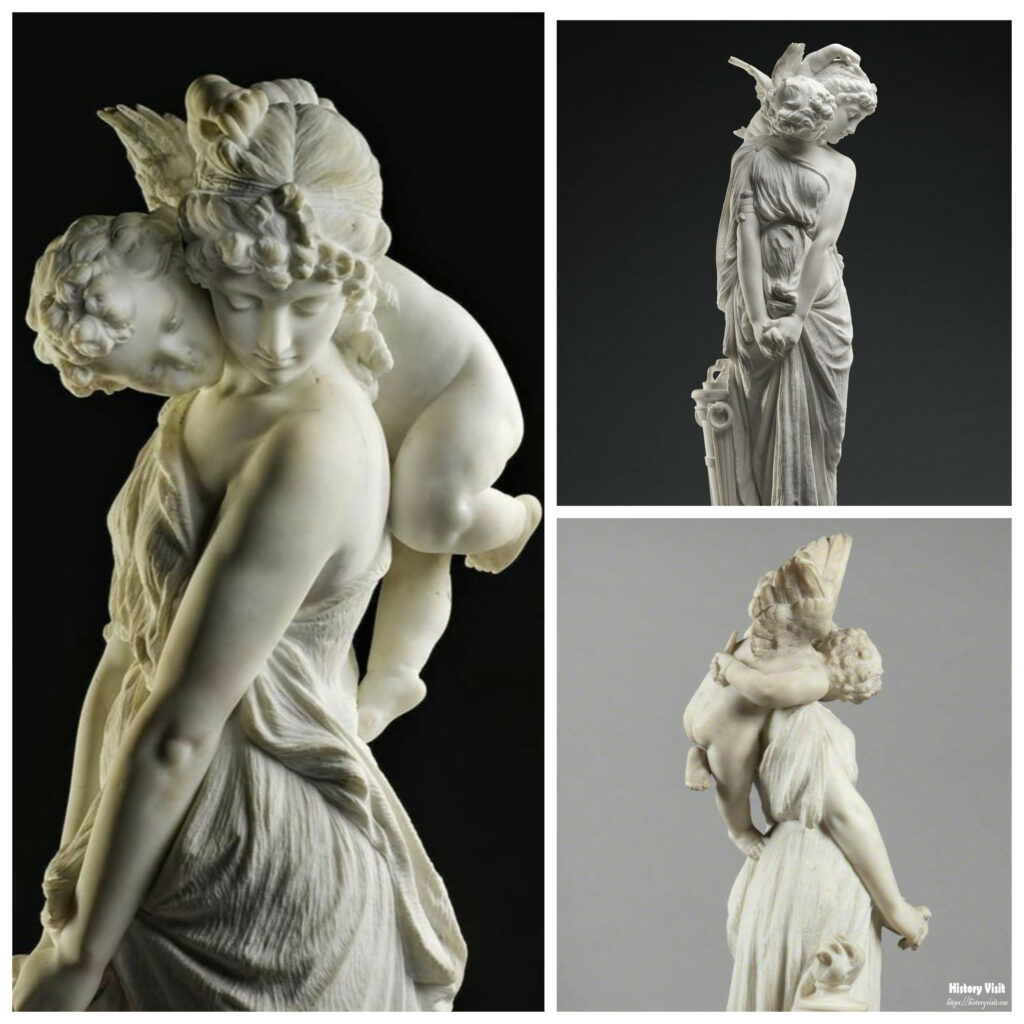
Introduction
“The Temptation of a Vestal” by Antonio Rossetti is an exquisite piece of art. Created in the 19th century, it showcases Rossetti’s skill in sculpting. The sculpture is made of black and white marble. It is creating a striking visual contrast. This article explores the historical context, artistic details, and symbolism of this remarkable work.
Rossetti’s choice of black and white marble adds depth to the sculpture. The contrast between the two colors highlights the emotional and thematic elements of the piece. The Vestal Virgin’s purity and the temptress’s allure are accentuated by this material choice.
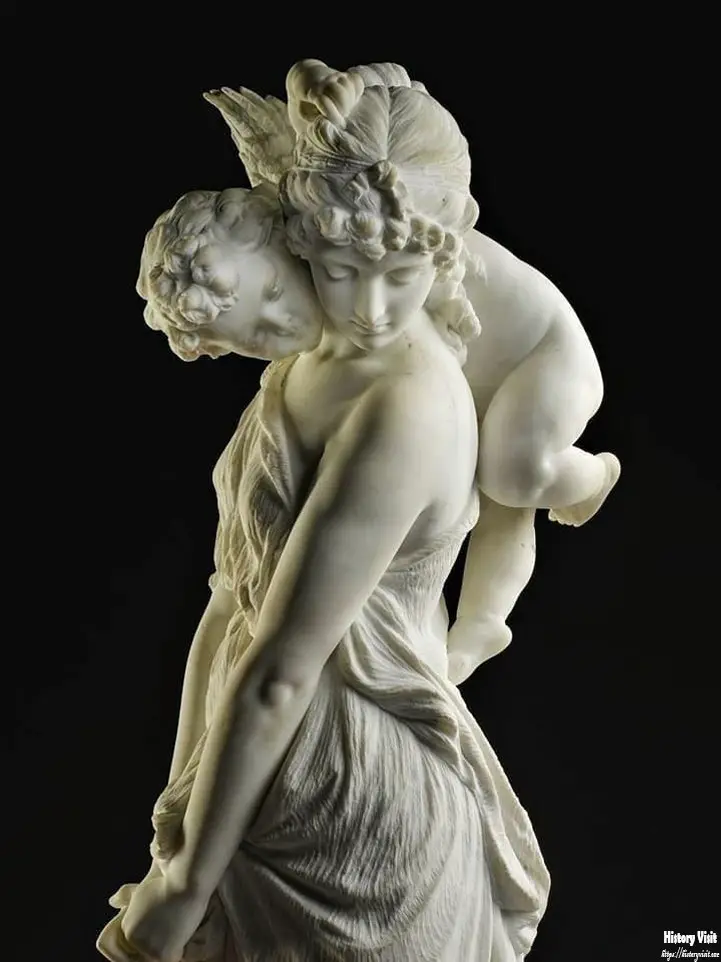
The use of black and white marble in “The Temptation of a Vestal” is not just an aesthetic decision. It also reflects the duality of the human experience, a theme Rossetti often explored. By examining this sculpture, we can gain insight into Rossetti’s artistic vision and the cultural significance of the Vestal Virgins in ancient Rome.
Historical Context
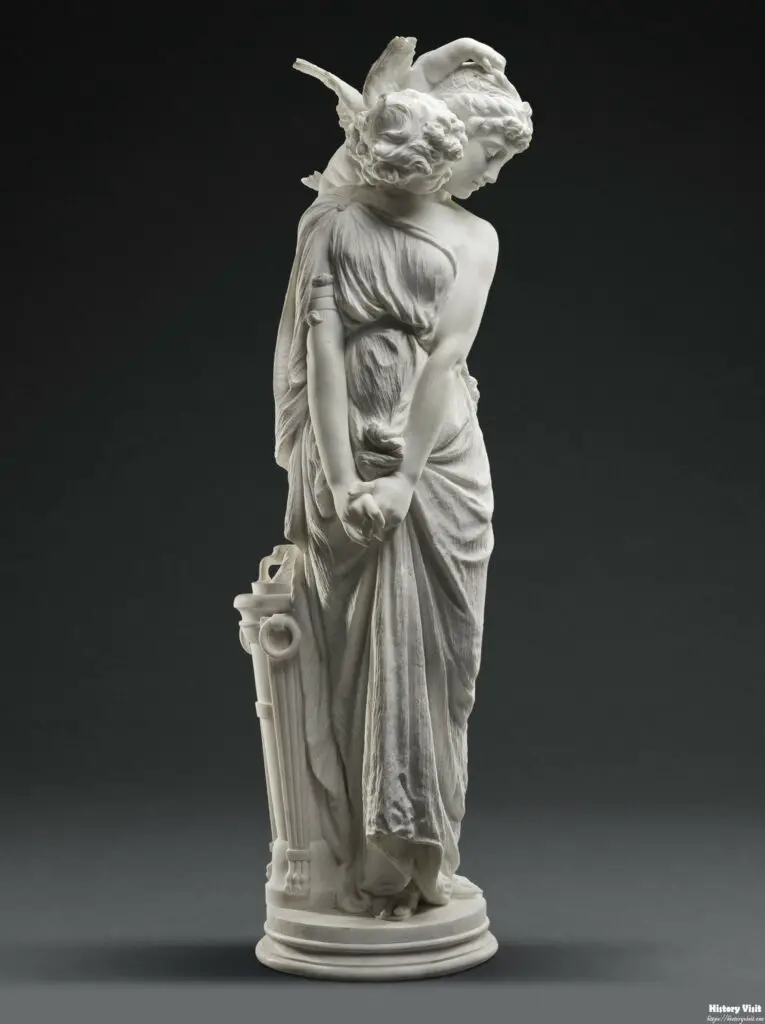
Antonio Rossetti was an Italian sculptor active in the 19th century. He was known for his meticulous craftsmanship and attention to detail. His works often depicted mythological and historical themes. “The Temptation of a Vestal” is one of his most famous pieces.
The Vestal Virgins were priestesses in ancient Rome. They were dedicated to the goddess Vesta and were sworn to celibacy. Their role was crucial in maintaining the sacred fire of Vesta, which symbolized Rome’s eternal life. Violating their vow of chastity was considered a grave offense, punishable by death.
In the 19th century, there was a resurgence of interest in classical antiquity. Artists and sculptors, including Rossetti, drew inspiration from ancient Rome and Greece. This period, known as Neoclassicism, emphasized the beauty and virtues of classical art. “The Temptation of a Vestal” reflects this fascination with ancient themes and the moral dilemmas they present.
Rossetti’s sculpture captures a moment of intense emotional conflict. The Vestal Virgin is a symbols of purity and duty. It is tempted by a figure representing passion and desire. This tension between duty and desire was a common theme in Neoclassical art. Rossetti’s use of black and white marble enhances this dramatic interplay.
Artistic Details
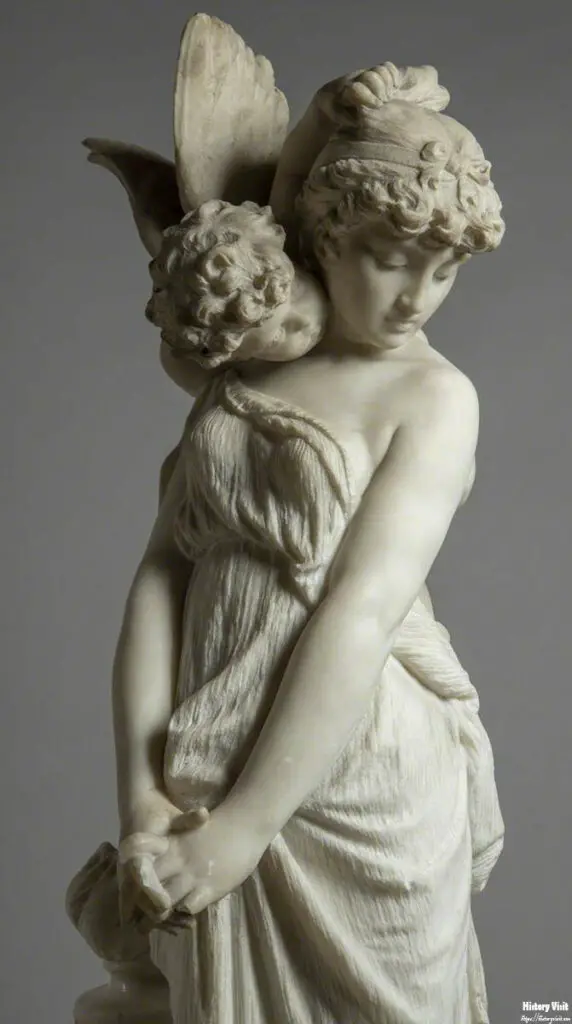
“The Temptation of a Vestal” is a masterful example of Rossetti’s skill in sculpting. The black and white marble used in the sculpture adds a dynamic visual element. The Vestal Virgin is depicted in white marble, symbolizing purity and innocence. The tempter is carved from black marble, representing temptation and moral corruption.
The contrast between the two figures is striking. The Vestal Virgin’s pose is one of resistance and inner turmoil. Her delicate features and flowing robes are meticulously carved, highlighting Rossetti’s attention to detail. The tempter, in stark contrast, is more aggressive in posture, with a predatory gaze and outstretched hand.
Rossetti’s use of black and white marble is not only aesthetically pleasing but also thematically significant. The interplay of light and dark symbolizes the eternal struggle between good and evil. The viewer is drawn into the moral conflict, experiencing the Vestal Virgin’s temptation firsthand.
The base of the sculpture is also noteworthy. It is a complicated design. its includes motifs from Roman architecture. This grounding in historical detail adds authenticity to the piece. Rossetti’s careful attention to every element of the sculpture reflects his dedication to his craft and his deep understanding of classical themes.
Symbolism in Black and White Marble
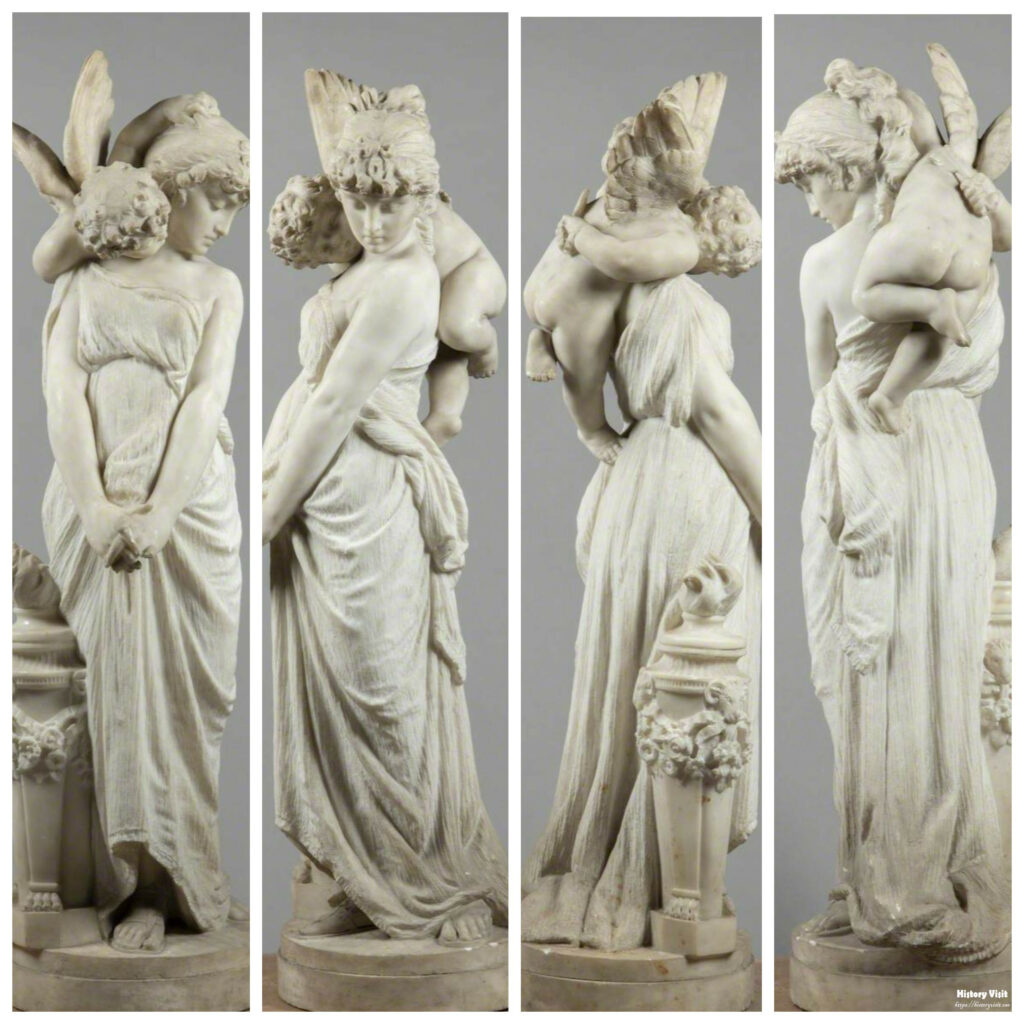
The use of black and white marble in “The Temptation of a Vestal” is rich in symbolism. White marble has long been associated with purity, virtue, and the divine. In contrast, black marble often symbolizes the unknown, danger, and moral ambiguity.
In this sculpture, the Vestal Virgin’s white marble form embodies her role as a guardian of virtue. Her commitment to her vows and the goddess Vesta is visually reinforced by the purity of the white marble. Her expression and posture convey her inner struggle and resolve to maintain her duty.
The tempter, carved in black marble, represents the allure of forbidden desires. The darkness of the marble signifies the moral peril and the seductive power of temptation. His invasive posture and intense gaze add to the sense of danger and urgency in the scene.
The contrast between the two figures highlights the central theme of the sculpture: the conflict between duty and desire. The stark difference in the marble’s color serves as a visual metaphor for this internal struggle. The viewer is invited to reflect on the nature of temptation and the strength required to resist it.
Rossetti’s use of black and white marble also speaks to the broader human experience. It suggests that every individual faces moments of moral testing. The sculpture becomes a timeless representation of the battle between virtue and vice, resonating with audiences across generations.
Rossetti’s Legacy in Neoclassical Art
Antonio Rossetti’s contribution to Neoclassical art is significant. His works, including “The Temptation of a Vestal,” exemplify the era’s ideals. Neoclassicism sought to revive the art and philosophy of classical antiquity, emphasizing harmony, clarity, and moral integrity.
Rossetti’s sculptures often depicted themes from ancient mythology and history. He had a talent for capturing human emotion and moral conflict. His use of black and white marble in “The Temptation of a Vestal” showcases his innovative approach to traditional themes. This choice of material not only enhances the visual impact but also deepens the thematic resonance of his work.
“The Temptation of a Vestal” reflects Rossetti’s mastery of form and his ability to convey complex narratives through sculpture. The dynamic interplay between the figures, combined with the symbolic use of black and white marble, creates a powerful and thought-provoking piece.
Rossetti’s influence extends beyond his lifetime. His works continue to be admired for their technical excellence and emotional depth. “The Temptation of a Vestal” remains a prime example of how Neoclassical art can communicate timeless themes of human experience. His legacy endures in the continued appreciation of his sculptures by art enthusiasts and scholars alike.
Black and White Marble Conclusion
“The Temptation of a Vestal” by Antonio Rossetti is a masterpiece of Neoclassical sculpture. The use of black and white marble enhances the visual and thematic impact of the piece. Through this sculpture, Rossetti explores the timeless conflict between duty and desire.
Rossetti’s attention to detail and his skill in capturing human emotion are evident in this work. The contrast between the Vestal Virgin and the tempter highlights the central theme of the sculpture. The choice of black and white marble adds a layer of symbolism that deepens the viewer’s engagement with the piece.
This sculpture stands as a testament to Rossetti’s legacy in the world of art. His innovative approach to classical themes and his technical prowess continue to inspire admiration. “The Temptation of a Vestal” invites viewers to reflect on the nature of virtue and the challenges of maintaining it.
In celebrating this masterpiece, we also celebrate the enduring relevance of Greek myths and their representation in art. Rossetti’s work reminds us of the power of sculpture to convey complex narratives and evoke profound emotional responses. “The Temptation of a Vestal” is a lasting tribute to the skill and vision of Antonio Rossetti.


